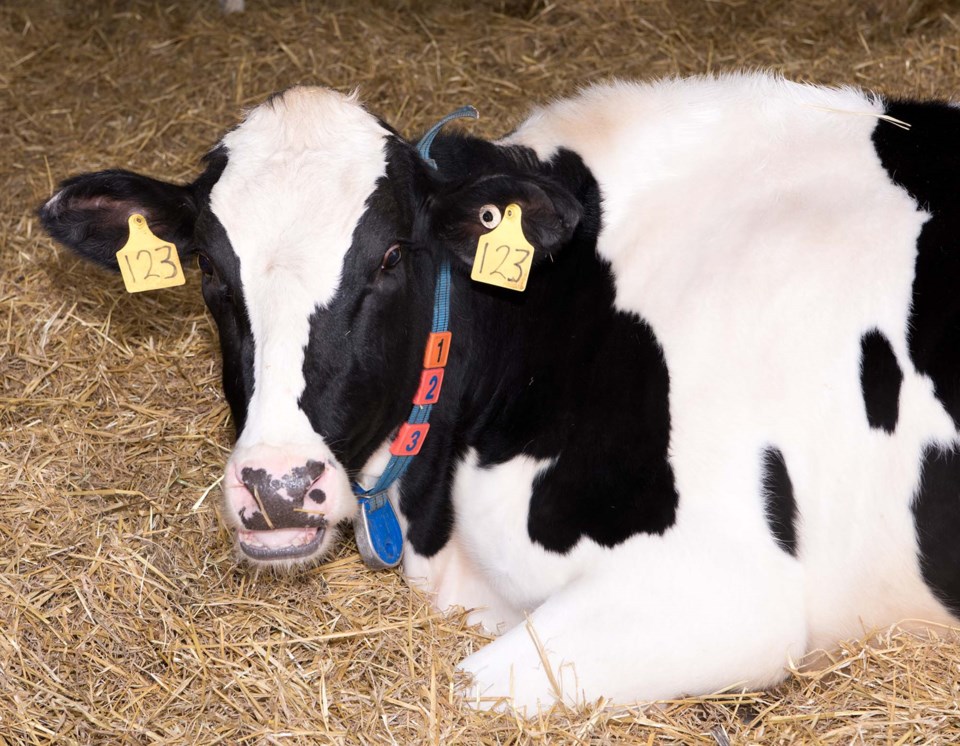When it comes to the climate challenge, the big culprits seem obvious: big power plants, humongous Hummers, and monstrous McMansions — all major sources of the gases superheating our planet.
But there’s another important source that often gets overlooked: food. One March 2023 study in Nature Climate Change found that global food consumption alone could warm Earth by 1 C by the end of this century, which is more than enough to blow us past the 1.5 C limit governments agreed to pursue under the Paris Agreement.
Albertans are seeing the impacts of this warming first-hand, as the fires, floods, droughts, and pests brought by global heating ruin our crops and jack up prices in our stores. But they are also taking steps to address it by changing how they eat and grow food.
How Now Green Cow is an ongoing series where the Gazette looks at how global heating affects the food on your plate, and what Alberta farmers and consumers are doing about it.
The beef with beef
The cow is an excellent symbol for agriculture when it comes to global heating. A December 2023 report from the UN’s Food and Agriculture Organization estimates that livestock production accounts for some 12 per cent of global greenhouse gas emissions, with an astonishing 62 per cent of that coming from cattle.
Cows produce greenhouse gas emissions mostly through their burps and manure, although fertilizer for feed and fossil fuels for farm machinery also contribute, explained Catherine Ivanovich, PhD candidate at Colombia University and lead author of that aforementioned March 2023 study.
“Ruminant animals (such as cows) have these stomachs that process their food differently, and that produces lots of methane,” Ivanovich said, and methane traps 27-to-80 times more heat than carbon dioxide (the main greenhouse gas).
Ivanovich and her team found that beef and dairy production would account for about 52 per cent of projected warming between now and 2030 as a result — more than any other food group.
Beef requires about 20 times more land and produces 20 times more greenhouse gases per gram of edible protein than beans, the World Resources Institute finds. This is because cows grow and reproduce more slowly than other plants and animals, making them less efficient — you can feed way more chickens with a pound of grain than you can cows. Much of this impact is from land-use changes: if you want to raise more cows, you typically have to chop down forests and turn them into pastures or crops, and those store less carbon than forests.
Greening the cow
Ivanovich’s research found that about 55 per cent of projected food-related global heating could be prevented through a combination of best industry practices, reducing food waste, and healthier diets. The UN’s FAO projects that such changes could reduce livestock-related greenhouse gases by about 79 per cent below business-as-usual levels and about 69 per cent below baseline levels by 2050.
Eating less meat, particularly beef, is part of the solution. The World Resources Institute projects that if every nation that eats lots of beef cut back to about 1.5 burgers of beef per person a week — about half the current American levels — we would nearly eliminate the need to expand agricultural production (and with it deforestation) between now and 2050. Ivanovich’s team found that people could cancel about 21 per cent of projected food-related warming if everyone adopted the diet recommended by the Harvard Medical School, which calls for one serving of beef or pork a week.
Such shifts would also make us healthier, as many studies have linked excessive red meat consumption to heart disease and other illnesses. The EAT-Lancet Commission found that switching to a mostly plant-based flexitarian diet (where about half your dinner is vegetables and maybe 12 per cent is dairy and animal-based proteins) would not only keep the world below 2 C of warming but also prevent about 11 million deaths a year by 2050.
You don’t have to eliminate meat completely to have an environmental impact, St. Albert dietitian Lauren Renlund said in an email.
“A good way to start is swapping out some animal foods with plant-based options, such as replacing half of ground meats with lentils in recipes like tacos and sloppy joes.”
Beans, lentils, nuts, seeds, tofu and edamame are all excellent sources of protein, Renlund said. If you do cut back on meat, add iron-rich plant foods such as pumpkin seeds and hemp hearts to your oatmeal to compensate.
Dietary change could account for maybe four per cent of that 78 per cent reduction in livestock-related carbon emissions, the FAO estimates. The rest will come from better breeding, waste reduction, and other measures that this column will cover in the coming months.
The choices we make at suppertime have real effects on our climate, said Ivanovich, who is a vegetarian.
“Every fraction of a degree really matters.”




